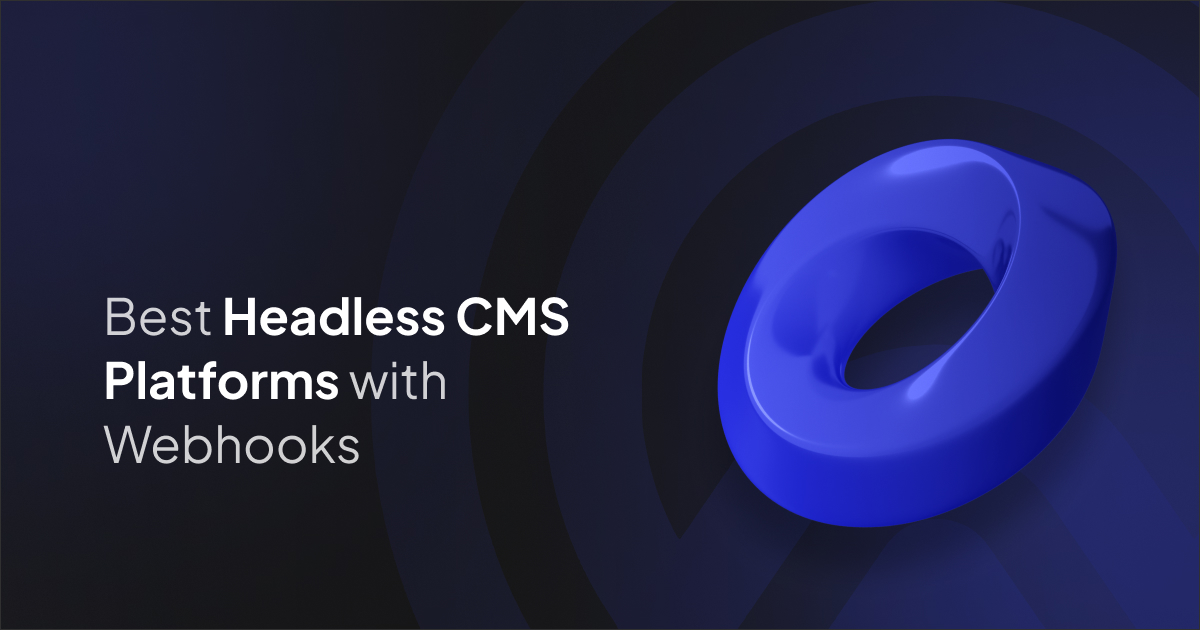Webhooks are automated messages sent from your CMS to an external service whenever a specific event occurs—such as publishing a blog post, updating product content, or deleting an entry. Unlike APIs that require continuous polling, webhooks push updates in real time, ensuring external applications stay in sync with content changes.
Why Do You Need Webhooks?
Webhooks unlock advanced automation and productivity:
- Continuous Deployment – Trigger build pipelines on platforms like Netlify or Vercel whenever content changes.
- Search Indexing – Automatically update Algolia or Elasticsearch to keep search results fresh.
- Marketing Automation – Sync new content with CRM or email marketing tools.
- Custom Notifications – Alert teams on Slack or Teams when critical updates go live.
In short, webhooks streamline workflows and reduce manual intervention.
Examples of Webhook Use Cases in Headless CMS
- E-commerce Integration – Automatically update product availability across channels.
- Multichannel Publishing – Push updates to apps, websites, and IoT devices simultaneously.
- Performance Optimization – Trigger cache invalidation for CDNs to ensure users always see the latest content.
- Analytics Tracking – Send real-time event data to analytics dashboards.
Top Headless CMS Platforms with Webhook Support
Strapi
An open-source, developer-friendly CMS that allows custom webhook configurations. Perfect for startups that want full control, Strapi makes it simple to integrate CI/CD pipelines and connect with external services.
Contentful
A market leader with advanced webhook support. Developers can set up complex workflows like triggering builds, updating translation tools, or connecting with marketing platforms.
Sanity
Sanity’s real-time architecture extends to its webhook system, enabling instant data synchronization across services. Ideal for dynamic applications that require live updates.
DatoCMS
Offers robust webhook management with retry policies and advanced targeting. Often used to integrate with Jamstack deployments and image processing workflows.
Prismic
With its release scheduling and webhook triggers, Prismic is a solid choice for marketing teams that want automated publishing across multiple channels.
Ghost
Focused on publishing and content-driven websites, Ghost includes webhook support for integrating newsletters, payment systems, and analytics.
Hygraph (GraphCMS)
Combines GraphQL-native content delivery with event-driven webhooks, enabling developers to connect CMS updates to microservices and serverless functions.
ButterCMS
API-first and lightweight, ButterCMS provides straightforward webhook functionality for triggering updates in blogs, apps, and ecommerce projects.
Kontent.ai (Kentico)
An enterprise-grade CMS with granular webhook configurations. It allows enterprises to integrate with DAM systems, ERP, and marketing stacks at scale.
Directus
Being open-source and database-first, Directus gives developers high flexibility with webhook triggers. Excellent for teams needing control over data modeling and automation.
Storyblok
With its visual editor and webhook system, Storyblok enables seamless deployment workflows and content synchronization across multilingual sites.
Agility CMS
Supports flexible webhook integrations that are especially useful for ecommerce, digital marketing, and content distribution scenarios.
Conclusion
Webhooks transform Headless CMS platforms from content repositories into automation hubs. Whether you’re a developer optimizing deployment pipelines, a marketer automating campaigns, or an enterprise syncing global systems, the right CMS with webhook support can dramatically improve efficiency.
From Strapi and Contentful to Kontent.ai and Agility CMS, these platforms enable teams to automate, scale, and deliver better digital experiences—faster.
Page Updated: 2025-09-09




















